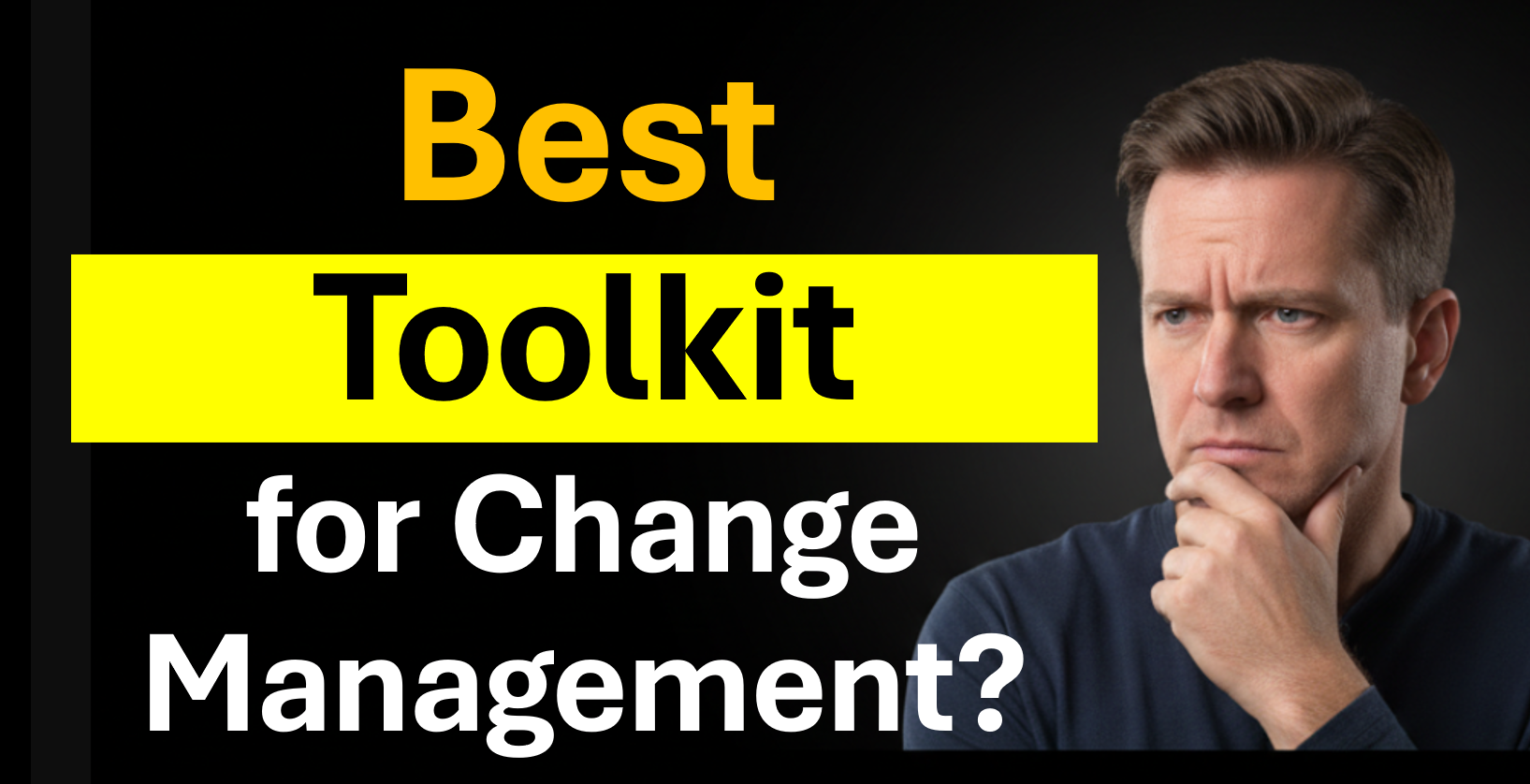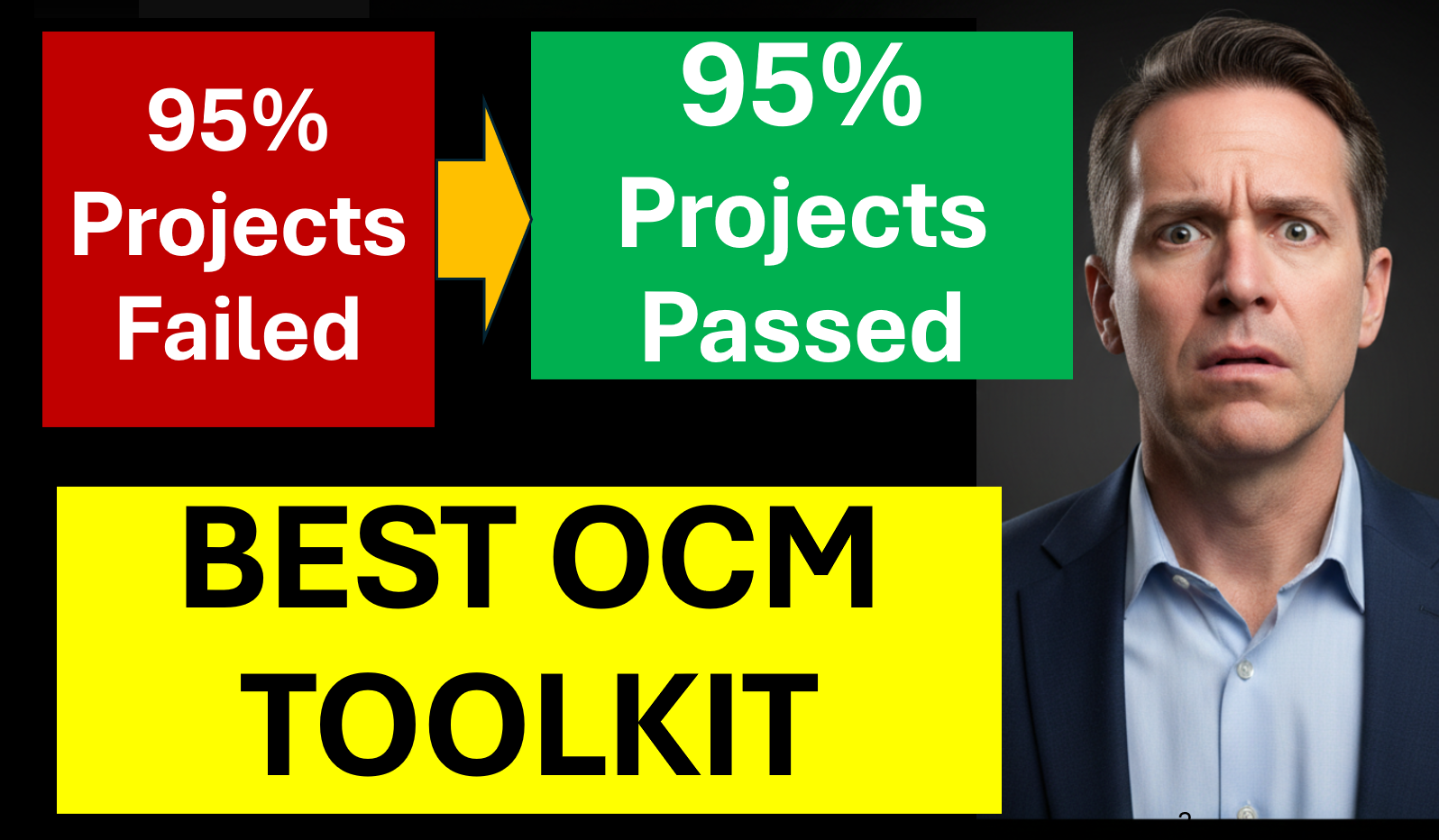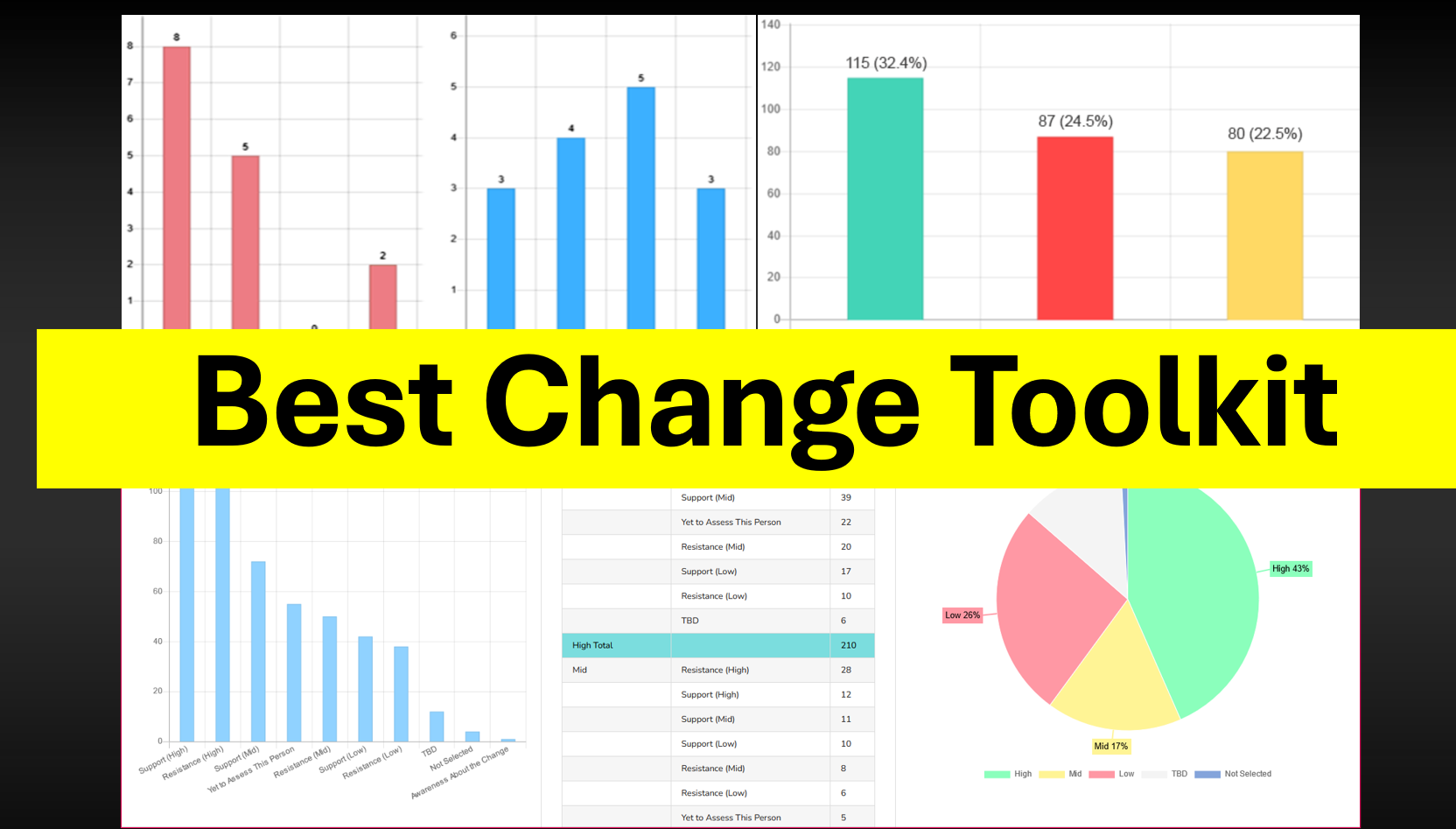Change Management Toolkit | Complete OCM Tools, Templates & Resources
Introduction
Organizational change is no longer optional. Companies of all sizes are transforming through digital initiatives, restructuring, mergers, process optimization, and culture shifts. But research consistently shows that up to 70% of change initiatives fail—and one of the biggest reasons is lack of structure in managing the people side of change.
That’s where a Change Management Toolkit comes in. A toolkit provides ready-to-use resources—such as checklists, templates, assessments, and communication guides—that help organizations plan, implement, and sustain change successfully.
In this guide, we’ll explore:
- What a change management toolkit is
- Why it’s essential for organizations
- What should be included in an OCM toolkit
- How the OCM Portal offers one of the most complete toolkits with over 100 free resources
- Best practices for using a toolkit to achieve real transformation success
If you’ve been searching for a change management toolkit, OCM toolkit, or organizational change management tools, this article will give you everything you need to get started.

What Is a Change Management Toolkit?
A change management toolkit is a structured collection of tools and templates used to guide the people side of change. Unlike project management software, which tracks tasks, milestones, and budgets, a change management toolkit focuses on adoption, communication, training, and resistance management.
Key purposes of a toolkit include:
Providing a consistent framework across all change initiatives
Saving time with pre-built templates and resources
Standardizing best practices for change managers and HR teams
Ensuring all critical OCM deliverables are addressed
Toolkits can be delivered in multiple formats:
Free PDF or Word templates (often downloaded online)
Excel trackers and checklists
Comprehensive OCM software platforms that combine all resources into one integrated system
Why Organizations Need a Change Management Toolkit
Without a toolkit, every change manager or project team has to start from scratch. That often means reinventing stakeholder maps, communication plans, and readiness surveys for every new project. The result? Inconsistency, inefficiency, and missed opportunities.
A change management toolkit ensures:
Structure – Teams follow a consistent roadmap for change.
Clarity – Roles and responsibilities are clearly defined.
Engagement – Stakeholders, sponsors, and employees remain aligned.
Measurement – Leaders can track adoption, resistance, and readiness.
In short, a toolkit makes change management more predictable, measurable, and scalable.
The Evolution of OCM Toolkits
Historically, change management relied on consultants building frameworks from scratch or organizations adapting project management templates for people-focused activities. Over time, thought leaders in Organizational Change Management began publishing structured methodologies (like ADKAR, Kotter’s 8 Steps, and Prosci).
Modern OCM toolkits evolved to combine:
Methodology (best practices and steps)
Templates (practical tools for execution)
Software (centralized platforms for tracking and reporting)
Today, the best toolkits, such as the OCM Portal, integrate all three—providing both free resources and scalable software.
What’s Included in a Change Management Toolkit
A robust change management toolkit should cover the full lifecycle of change: Planning, Engagement, Execution, and Sustainment.
Here are the most common categories and deliverables:
Planning Tools
OCM Strategy Frameworks – define approach and methodology
Initial OCM Manager Tasks Checklist – steps to begin the change effort
Change Impacts Assessment Templates – analyze who and what will be affected
Change Risk Assessments – identify potential barriers and risks
Engagement Tools
Stakeholder Mapping Templates – analyze influence and support levels
Sponsor Engagement Plans – define sponsor visibility and activities
Change Champion Resources – guides for engaging and enabling advocates
Communication Plans & Calendars – structured messaging to keep everyone aligned
Execution Tools
Readiness Assessments – surveys to measure preparedness
Resistance Logs and Strategies – capture and address resistance
Training Plans and Tracking Tools – assign, deliver, and monitor training completion
User Acceptance Testing (UAT) Templates – ensure systems and processes are validated before launch
Sustainment Tools
OCM Metrics and Dashboards – track adoption and performance
Status Report Templates – communicate progress to leadership
Transition & Exit Checklists – ensure a smooth project closeout
Coaching Guides – provide leadership and manager support after go-live
A toolkit that includes all these resources ensures no critical OCM deliverable is overlooked.

The OCM Portal Toolkit
The OCM Portal provides one of the most complete toolkits available today. It includes:
Over 100 free templates, checklists, and guides
A 14-day free trial of its full software platform
Integrated tools covering every OCM deliverable
The OCM Portal toolkit covers:
Change Impacts – analyze the who, what, and how of change
Stakeholders – track influence, engagement, and support
Resistance – manage resistance points with structured strategies
Communications – build, schedule, and monitor communications
Readiness – survey employees and measure preparedness
Go-Live Assessments – evaluate readiness before launch
Change Champions – track advocates and their engagement activities
Training – assign, deliver, and track training completion
OCM Playbooks and Plans – build and execute standardized plans
Sponsor Management – ensure leadership is actively engaged
Coaching Tools – provide ongoing support to managers and leaders
This combination of free OCM toolkit resources and professional-grade software makes OCM Portal a leading solution for both small organizations and large enterprises.
How to Use a Change Management Toolkit Step by Step
Start with Planning
Use initial task checklists to set up governance.
Complete a change impacts and risk assessment.
Engage Stakeholders and Sponsors
Map stakeholders by influence and support level.
Develop sponsor visibility plans and briefing materials.
Develop Communications and Training Plans
Use ready-made templates to draft a communication calendar.
Create training assignments and track completion.
Measure Readiness and Address Resistance
Conduct readiness surveys and gap analysis.
Capture resistance in logs and assign mitigation strategies.
Execute Go-Live Activities
Run a go-live readiness assessment.
Ensure UAT templates are completed.
Track Metrics and Sustain Change
Use OCM metrics templates to measure adoption.
Provide coaching and transition tools for long-term success.
By following these steps, organizations ensure a structured and repeatable approach.

Free vs. Paid Change Management Toolkits
Free Toolkits
Pros: Accessible, no cost, immediate use
Cons: Limited customization, harder to scale, often disconnected
Paid / Software Toolkits
Pros: Integrated, scalable, measurable, customizable
Cons: Subscription costs, training required
The OCM Portal offers the best of both worlds:
Free toolkit resources available to anyone at https://www.ocmsolution.com/free/
A 14-day free trial of the paid software toolkit at https://www.ocmsolution.com/software/
This flexibility makes it one of the most accessible OCM solutions.
Benefits of Using a Change Management Toolkit
Organizations that use a toolkit gain measurable advantages:
Efficiency – save time with pre-built resources
Consistency – standardize processes across teams and projects
Adoption – improve employee buy-in through structured engagement
Measurement – track readiness, adoption, and success metrics
Scalability – apply best practices across multiple projects
Whether you are leading a digital transformation, restructuring, or new system rollout, a toolkit ensures you don’t miss critical OCM activities.
Conclusion
A change management toolkit is essential for delivering structured, successful organizational change. It provides the templates, checklists, and resources that ensure adoption, reduce resistance, and improve results.
The OCM Portal combines more than 100 free toolkit resources with a powerful all-in-one software platform—making it one of the most complete solutions available today.
To get started, download free resources at:
https://www.ocmsolution.com/free/
Or try the full OCM Portal software toolkit free for 14 days at: https://www.ocmsolution.com/enterprise-change-management-software/
With the right toolkit, you’ll have everything you need to lead change with confidence, efficiency, and measurable success.
Note: Content on OCM Solution's ocmsolution.com website is protected by copyright. Should you have any questions or comments regarding this OCM Solutions page, please reach out to Ogbe Airiodion (Change Management Lead) or the OCM Solutions Team today.
Frequently Asked Questions (FAQs) – OCM Toolkit
It’s a set of templates, checklists, and tools that guide the people side of change.
Key tools include stakeholder maps, readiness surveys, communication templates, training trackers, resistance logs, and adoption metrics.
Yes. OCM Solution's OCM Portal provides over 100 free OCM templates and checklists
Yes. The OCM Portal offers a 14-day free trial of the All-in-One-Change Management Software
It standardizes best practices, saves time, and improves adoption outcomes.
They provide structured communication, resistance logs, and sponsor engagement resources.What is a change management toolkit?
What tools should be included in a toolkit?
Is there a free change management toolkit?
Can I get a free trial of OCM software?
Why is an OCM toolkit important?
How do OCM toolkits help reduce resistance?
